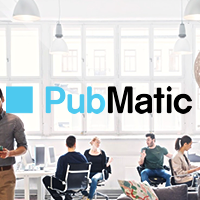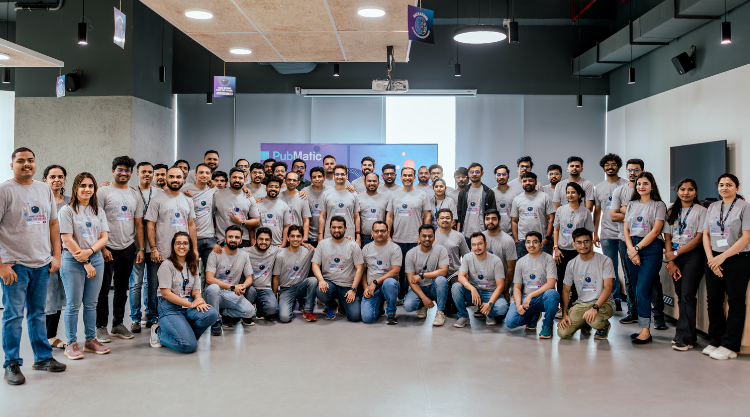Auction packages are shaping up to be a secret weapon for both marketers and publishers, as they add addressability to digital by bringing data and media closer than ever.
The next year promises huge change for the digital marketing industry, with identity solutions needing to become privacy-first, something that could reshape addressability for good.
According to PubMatic, advertising auction packages have really shown added value for digital media during the incredibly competitive festive shopping period in Asia Pacific, allowing useful, actionable privacy-first data sets to be combined with high-quality media. As marketers get ready for the next year, with major APAC events like Chinese New Year looming, The Drum speaks to experts to understand why addressability and auction packages are set to be top of a marketer’s wish list.
Why are auction packages and addressability needed in programmatic?
“Addressability has always been important for advertisers as it helps them serve relevant ads to their identified target audiences and maximize their advertising ROI. Historically, advertisers have utilized a mix of first, second, and third-party data on their campaigns. One way to maximize campaign efficiencies and achieve addressability is through auction packages where advertisers can easily package curated supply with data delivered through a single deal ID to best reach their ideal audience at the most cost-efficient CPMs.”
– Joelle Siew, ad solutions lead, SEA and GCK, PubMatic
“They are required so that clients and traders can go back on time. But jokes aside, in a day and age where audiences are desensitized to the many online ads. We need to be more inventive/innovative in getting the audience to engage with our ads.
This is where PubMatic auction packages come into play. By leveraging probabilistic audience data and premium inventory it will help to give us better campaign outcomes. Key benefits include cost transparency and efficiency; control over premium whitelist lead to lower fraud rate and higher priority means better win rates. Did I say easy to set up into our DSP of choice as well? Some of the packages that were built together with PubMatic include Fashion, Automotive, Finance, Travel, Consumer Tech, and Premium OTT.”
– Khairul Helmi, operations director, Publicis Media, APAC
“There are clear benefits for both publishers and buyers using auction packages, including reducing data leakage, increasing the value of their inventory and becoming more consultative. Buyers become closer to their target audiences, aligning with inventory sources to maximize the reach of the right consumers.
Without publishers bringing their audience, there isn’t a programmatic ecosystem as auction packages allow publishers to communicate with buyers, helping them find their target audiences. Without ensuring addressability, this isn’t possible, and identity solutions increase that publisher’s inventory value by enabling marketers to find consumers across the open web.”
– Zuzanna Urbanova, head of data solutions, APAC, Lotame
“In this digital age where consumers are constantly bombarded with non-stop ads through the multiple devices they own, and marketers getting more pressure to justify every dollar they spend in advertising and programmatic; addressability becomes more and more important to cut through the noise and create relevancy. It helps create a positive impact on the consumer experience and at the same time boosts brand loyalty and drives better ROI for marketers. Auction packages are a great way to execute that by making the process transparent, efficient, and scalable.”
– Liza Tan-Arrobio, senior manager, private marketplace development, APAC, PubMatic
“For years, data and media have been kept on opposite sides of the ad tech ecosystem, with media on the SSP side and data in the DSPs. Given that SSPs and DSPs are often different businesses, this separation causes data and media to work against one another at times, which is counterintuitive to what publishers, agencies and brands want – the most addressable scale possible on the best quality media available. Auction packages are a very elegant solution to this, not to mention they significantly reduce the optimization workload for traders during a campaign which I am sure every agency will agree is a huge benefit!”
– Krish Raja, general manager, Australia, Captify
How well is this working for your business?
“Many advertisers at PubMatic have been utilizing auction packages for various reasons and have seen great efficiencies both operationally and on performance.
Use cases include:
- Advertisers are streamlining their buying by adopting an omnichannel approach to supply and layering key audience segments on their auction packages.
- Advertisers who adopt a contextually driven approach for scale (eg. In-app gaming auction package to target millennials and high propensity spenders)
- Agency buyers who have adopted a marketplace approach by curating different auction packages catered for specific advertisers which can differ by audiences, channel, performance indicators, etc.
- Advertisers who are looking to drive performance (High viewability, etc).”
– Joelle Siew, ad solutions lead, SEA and GCK, PubMatic
“For a beverage advertiser, one of the audience insights was increase in consuming video content on CTV/OTT environment. Instead of the traditional manner of targeting the high value audience, we activated the Premium OTT Auction Package.
As the large volume of campaigns is on video on top of the seamless setup, we are assured of the quality of OTT/CTV sites and their efficient pricing. When we do run display creatives, we observed that the campaign CTR is twice as high as the Open Exchange environment. We have since expanded usage auction package usage with advertisers from other verticals and we have seen positive results.”
– Khairul Helmi, operations director, Publicis Media, APAC
“We work closely with our publisher partners as well as SSP partners like PubMatic to offer data packaged in Deal IDs against our Panorama ID. This enables publishers to instantly unlock an additional 30% inventory across cookieless browsers like Safari and Firefox today, helping increase programmatic revenue. Our data solutions allow publishers and SSPs to package first, second and third-party data to increase the value of their inventory by finding high-value users in demand by the buy-side. Our initial tests have seen 8x CPM increase for publisher and lift in overall yield and a 2x increase in addressability.”
– Zuzanna Urbanova, head of data solutions, APAC, Lotame
“Addressability has been one of the key growth drivers in PubMatic as we also continue to invest in this area heavily going into 2022. With our addressable solutions and auction packages, our clients can, not just access trusted and premium inventory, but also enhance the inventory they buy with valuable data that ultimately improves performance and reduces waste. This benefits both our buyers as we help them achieve their campaign objectives, as well as our publishers who can get more opportunities to monetize their inventory while making meaningful experiences for their users.”
– Liza Tan-Arrobio, senior manager, private marketplace development, APAC, PubMatic
“Captify is leading the charge with data-enriched media in the Australian market; we partner with PubMatic to identify our vast stores of search intent signals across all the media available in the SSP. We’re seeing huge efficiency gains in media performance and scale across the board, and we think it’s a game-changer for anyone that wants a future-proofed and scalable data-driven programmatic solution to use.”
– Krish Raja, general manager, Australia, Captify
What’s your prediction on the future of addressability for 2022?
“With the emergence of privacy concerns and third-party cookies going away, addressability will become even more pertinent. Advertisers will need to find new ways to continue serving relevant ads to their target audiences. I believe 2022 will be the year where more advertisers will start seriously considering and testing alternative data and identity solutions while working closely with their ad tech partners to develop innovative solutions to help ramp their first-party data. Contextual targeting solutions will also become more popular with advertisers who require that scale for their campaigns.”
– Joelle Siew, ad solutions lead, SEA and GCK, PubMatic
“Addressability in South East Asia region is still a concept that is still being confused with concept such dynamic creative optimization. Other stumbling blocks to the adoption of addressability are the lack of scale for first-party data and the availability of budget to test out the effectiveness of true addressable campaign activation. The reality of things on the ground we are still trying to convince clients to move away from vanity metrics, importance of attribution, and understanding the difference between cheapest media cost vs cost efficiency.
Now I am not painting a bleak future of addressability but there is room to improve through education, highlighting its unique selling points, key benefits, and how it will help to improve client’s business goals.”
– Khairul Helmi, operations director, Publicis Media, APAC
“ID solutions for the open web and third-party data are going to be invaluable for publisher monetization because the alternatives that will crop up in its absence aren’t feasible for smaller publishers. First-party data or contextual targeting can’t be the solution for publishers who lack scalable data. Contextual data works only inside one’s domain, and marketers are less willing to engage with sites that don’t have as many monthly visitors as the larger ones.”
– Zuzanna Urbanova, head of data solutions, APAC, Lotame
“As we come closer to a world without third-party cookies, initiatives to prepare for cookieless targeting solutions with alternate IDs and contextual technologies will continue to gain traction. We have already seen it this year, but we’ll see this space continue to evolve, from both advertisers and publishers and more focus on the value of first-party data”
– Liza Tan-Arrobio, senior manager, private marketplace development, APAC, PubMatic
“Addressability will only improve in the marketplace if we work together to achieve it. Publishers hold the key here; tech providers need to work closely with them to unlock addressable media in a permission, consented way that reaps rewards for publishers and end consumers alike. Through partnerships like PubMatic and Captify, we can unpick some of the problems cookies created for our industry by creating new ways of operating that benefits everyone by increasing the value that publishers create and those advertisers get access to.”
– Krish Raja, general manager, Australia, Captify Originally published in The Drum




